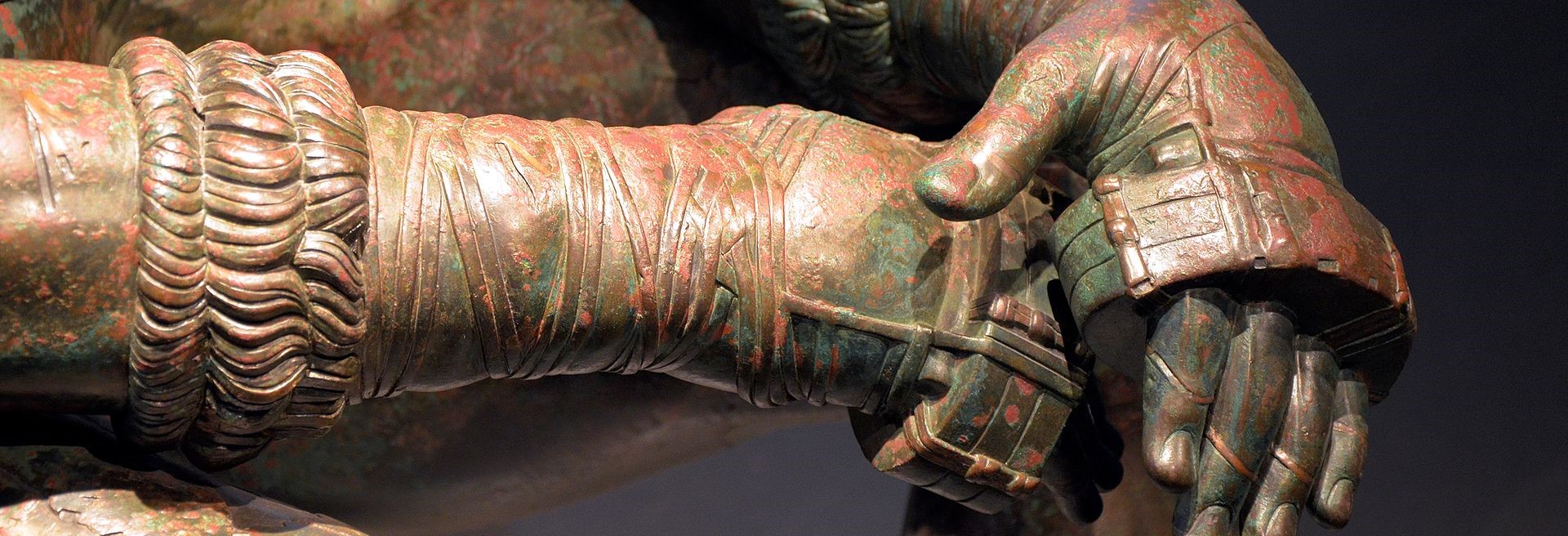Athletics and Games in the Ancient Greek World (CX290-15, CX390-15)

Athletics and Games in the Ancient Greek World
Convenor: Dr Matthew Evans.
Athletics, spectacles and games were integral features of ancient Greek society and culture. They intersected with countless other activities in the daily lives of the Greeks, from religion, politics, education, and civic life, and they contributed to the very definition of what it meant to be Greek. This module explores these intersections and provides a comprehensive overview of ancient Greek athletics through a variety of source material and from both a historical and archaeological perspective. Upon completing this course, students will gain an understanding of the history of athletics from their beginnings in Mycenaean, Minoan and Homeric culture, to the rise of the Panhellenic Games and gymnasia, and their development in the Hellenistic and Imperial periods. Students will be able to analyse the relevance of athletics in other areas of study, including poetry, philosophy, architecture, sculpture, religion, and politics, and will engage with key concepts (e.g. identity (social and cultural) and gender) and new approaches such as sensory studies. Students will also explore the legacy of ancient athletics in western culture by critically evaluating the history of the modern Olympics and interrogate the historiography of ancient athletics.
Learning Objectives
- Enhance research, writing and communication skills.
- Gain an understanding of the history of Greek athletics from their origins in prehistoric times to their decline in the late Roman Empire.
- Be able to critically utilise a range of primary source material to evaluate the social, political and cultural significance of athletics in the Greek world.
- Be able to critically engage with secondary scholarship and important debates on ancient athletics and related topics.
- Be able to consider the legacy and reception of Greek athletics in western culture from the 18th century onwards.
- Be able to communicate research on ancient athletics to a wider audience through the writing of a blog post.
In addition, final-year students should be able to show
- The ability to set their findings into a wider comparative context, drawing in other aspects of the study of the ancient world
- The ability to seek out appropriate secondary literature and show discernment in the types of primary evidence addressed.
Structure
The initial three lectures set out the development of athletics in the Greek world from a historical perspective, spanning from their origins in prehistoric and Homeric times to their decline in the late Roman Imperial period. The following six lectures are thematic in nature, exploring various intersections of athletics with wider Greek society and culture.
- Introduction: The Origins of Greek Athletics in Minoan, Mycenaean, and Homeric Times
- The Rise of Panhellenic Games and the Gymnasium in Archaic and Classical Greece
- The Expansion of Greek Athletics in the Hellenistic and Imperial Periods
- Athletic Spaces in the City and Sanctuary
- Athletics and Identity in Life and Death
- Reading week
- Sensory Approaches to Greek Athletics
- Women, Slaves and Sexuality in Greek Athletics
- Athletics and Power: Games, Spectacles, and Imperialism
- Modern Olympics: The Legacy of Greek Athletics
Three seminars on key themes will compliment material covered in the lectures, with in-depth discussions of particular sources and debates in scholarship.
Assessment
60% 2,500-3,000-word essay; 40% blog post on key literary extract, object or site.
